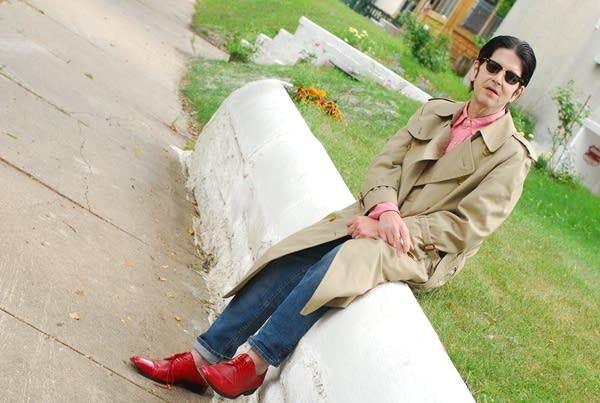Grant Hart documentary Every Everything lives up to its title

November 13, 2013
The conclusions I came to after watching Jan Radder and Gorman Bechard's new documentary Every Everything: The Music, Life & Times of Grant Hart may seem contradictory at first, but hear me out: I believe that Fans of Grant Hart and Hüsker Dü should absolutely see this film. At the same time, I also believe that fans of the documentary film format—and those who generally enjoy being entertained by movies—will find it woefully tedious.
Despite its flaws, Every Everything paints the most complete portrait of Grant Hart to date. He's not simply Grant Hart, the sarcastic and persnickety former member of Hüsker Dü, or Hart, the eternal underdog solo artist, or Hart, the well-read and pensive academic. We get all of those sides of his personality and more, plus a revealing glimpse at Hart pacing around the grassy plot where his house once stood and amid boxes of his belongings in a storage garage, attempting to piece his life back together after a fire robbed him of his home and one of his cats.
But the film's director puts the viewer through quite the lengthy trial before serving up those sad, sweet, and profound moments.
Grant Hart has a mind that wanders into deep and fascinating areas, and sometimes just letting him wander can yield magnificent results. What's lacking in Every Everything is the ability to draw out those nuggets of wisdom and assemble them into an overarching narrative in an engaging way; at times, the movie felt like the raw footage a filmmaker might show someone before they've sat down to actually edit it into a movie. We are literally getting ev-er-y-thing.
The film begins with Hüsker Dü, including some incredible footage of the band being interviewed on Joan Rivers' Tonight Show, but despite the fact that Hüsker Dü contained three members we only get a chance to hear from Hart. Which was intentional—before the filming for the documentary even began, producer Jan Radder explained that it would only consist of interviews with Hart and some archival footage, using Errol Morris’s The Fog of War as a template—and yet the Hüsker Dü portion of the film feels distinctly like Hart's opportunity to respond to Bob Mould's descriptions of the band's dynamic in his memoir, which came out two years ago. Hart doesn't come off nearly as angry or sharp-toothed as Mould did, even saying that he loves Mould at one point, but the conversation feels one-sided and downright lonely.
During the interview segments we see Hart sitting in the 7th St. Entry, sitting in a bright pink alley, and sitting outside and inside the studios where Hüsker recorded much of their work. We see him pawing through boxes of old memorabilia and records in his storage space, playing a few drum fills behind a kit, remembering back to his days playing in Nova Mob, and preparing to record the tracks for his new double album, The Argument. It is an intimate experience, but also an isolating one; by the end of the film the loneliness of the presentation begins to overwhelm the work and the viewer can't help but take pity on the film's subject as he wanders aimlessly around. Which seems like the opposite of what such a smart, wry, and sensitive artist like Hart deserves.
If the film itself had been edited to be remotely as exciting as its trailer, this could have been a thrilling rock 'n' roll documentary. As it stands, it flows like the rough draft of a memoir that could have used some fine-tuning. Regardless, it's a story that's still definitely worth hearing and seeing Hart tell.
Every Everything screens tonight, Wednesday, November 13, at the Landmark Center in downtown St. Paul and will kick off the Sound Unseen films-about-music festival. Grant Hart will perform after the screening at the Amsterdam Bar and Hall, with support from openers the Greycoats.
http://www.youtube.com/watch?v=SQx36OeXYz4

